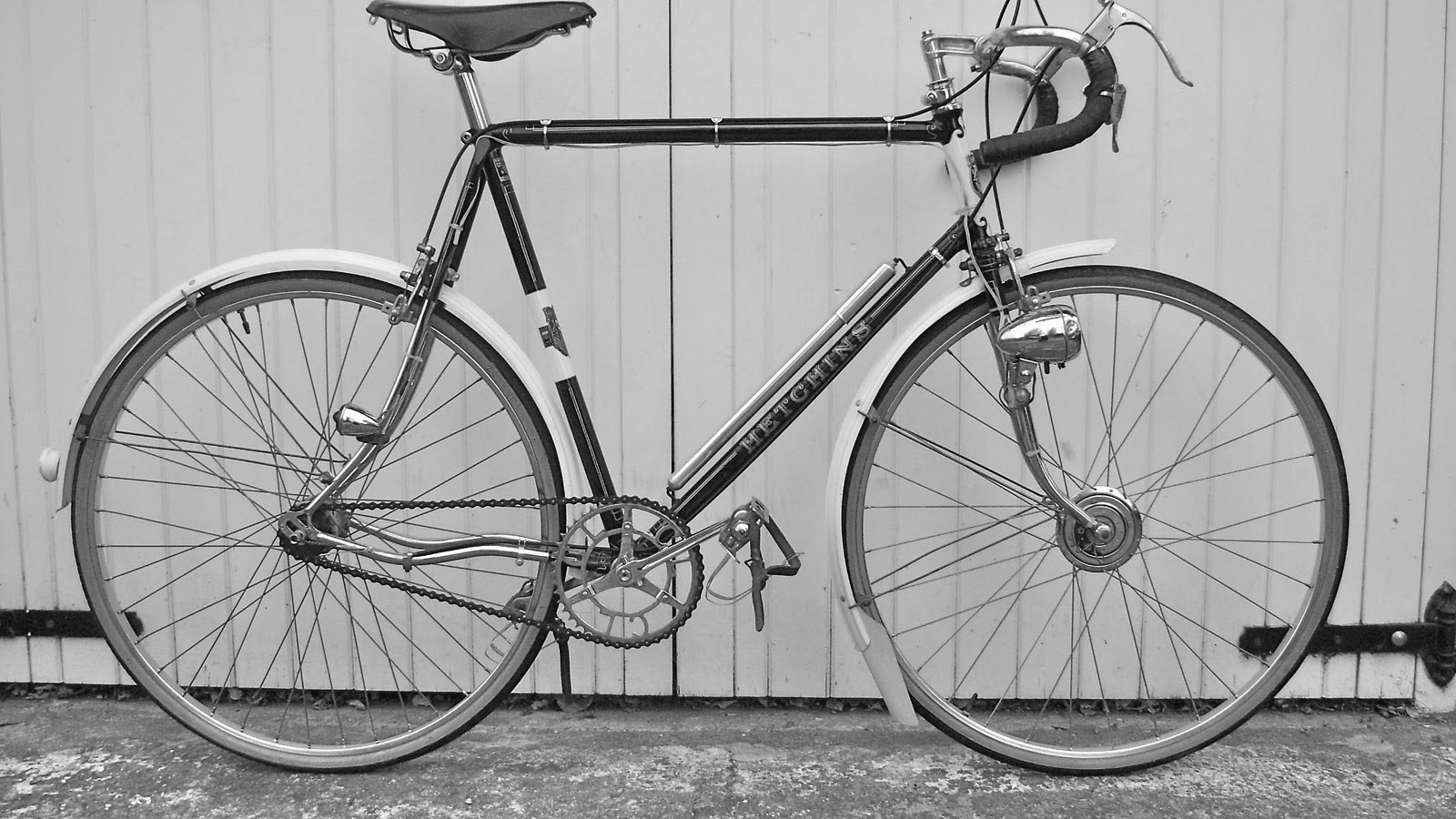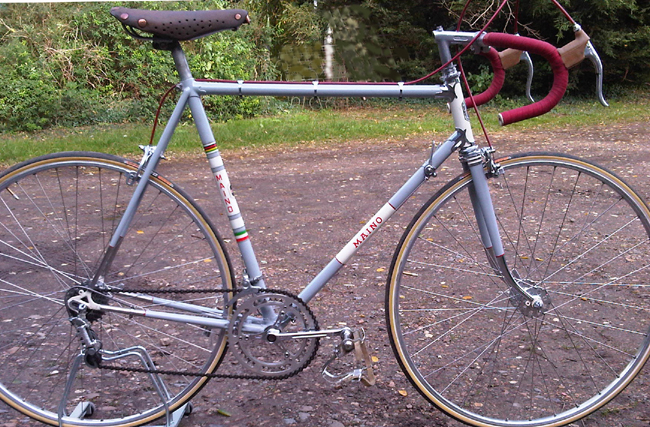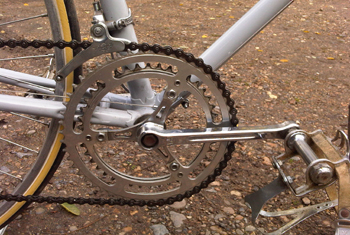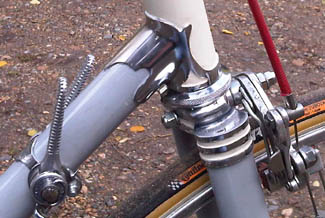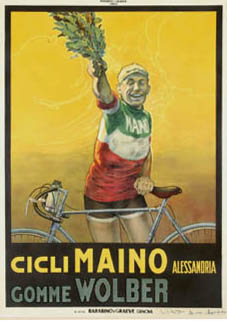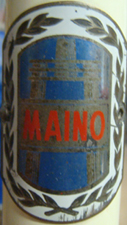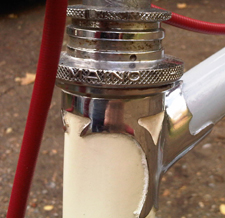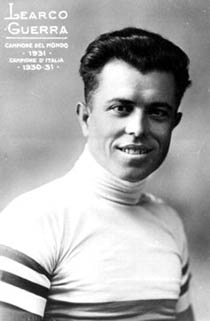Giovanni Maino - 1950
Posted: Thursday 13th August 2020
| Frame | Giovanni Maino 1950; 864054 is the last part of the number on the top of the seat tube, Campagnolo dropouts, distinctive Maino tripple plate fork crown 59 stamped twice on the BB. Seat tube 59 cm, top tube 58cm; Maino pantographed headset plus Maino headbadge |
| Wheels | Fiamme sprint rims on Campagnolo Tipo large-flange QR hubs with straight levers, Continental Giro tubs |
| Chainset | Campagnolo steel 3-arm cotterless cranks, sport model 1971 with Campagnolo chainrings 52 /43 alloy |
| Pedals | Lyotard Marcel Berthet platform |
| Gears | Campagnolo Nuovo Record rear and Gran Sport front with Campag down tube levers |
| Brakes | Universal Extra inc blocks brev 453949 stirrups and Model 51 first type /1951/ 61 levers, new hoods |
| Stem/Bars | Unknown make |
| Saddle | Unknown make, perforated 'Made in England 73' on metal frame on Campagnolo 2- bolt alloy seatpin |
| Extra details | Purchased at L'Eroica 2010 |
The great racer Constante Girardengo turned pro in 1913 with the Maino-Dunlop team, and Learco Guerra (see image above) won the 1933 Milan-San Remo and the 1934 Giro d’Italia both with Maino.
Guerra was also 1931 World Road Racing Champion and Champion of Italy from 1930-34,
MAINO WAS A TOP END BIKE AND TEAM AT ONE TIME, SEEMS A SHAME NO ONE KNOWS ABOUT THEM,
After WWII. Giotto Cinelli was also good racer, good enough to be on the Maino squad in 1936 and to finish in 10th place in Milan-Sanremo
1919: “I want to do business in iron and steel and make a fair and honest profit” wrote Angelo Luigi Colombo, aged 27, to the lessee of what was shortly to become A.L.Colombo’s small factory, the parent plant of the current Columbus tubing. Angelo Luigi had started work for a metallurgical factory in Milan when he was just 12 years old and, in 1919, after gaining sufficient experience, had decided to establish himself, seeing the cycling sector as fertile ground for the enormous innovative potential and obvious entrepreneurial vocation that inspired him. His first customers were mostly small manufactures obtaining supplies of metal tubes for saddle pillars, bent tubes for frames and handlebars, saddles and fork blades and tubes for pedals. Supplies were also aimed at the first leading cycling factories: Edoardo Bianchi, Umberto Dei, Giovanni Maino and Fratelli Doniselli. Five workers, an annealing furnace, a 10 ton draw bench and a great desire for success: that was the first A.L.Colombo plant in via Stradella, Milan, 1,300 square metres to produce.
Posted: Thursday 13th August 2020
Contents
This article appears in the following categories.
Upcoming Events
Whether you are looking for a gentle social meet up, or a 100-mile ride browse the community’s upcoming events and plan your next weekend outing.
